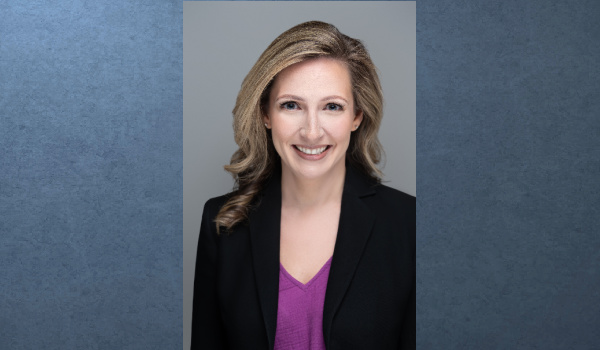Standing out in crowded and complex retail capital markets doesn’t happen by chance in the best of circumstances. And for many, the current landscape represents conditions that are far from ideal. The negative effects of current market volatility, rising interest rates and economic challenges are being felt across the wealth management and asset management industries.
Despite the uncertainty, alternative assets – including, but not limited to, private equity, hedge funds, private credit and private real estate – are still viewed by both Wall Street and Main Street as a viable option for investors seeking diversification and robust growth potential, particularly when the specter of potential recession rears its head.
In the face of current headwinds, how can alts managers and product sponsors most effectively design, develop and go to market with alts solutions that offer a compelling value proposition to independent broker-dealers and RIA firms?
To obtain some clarity on the topic, Digital Wealth News sat down with Amanda Teeple, a Partner at Alliance160, a turnkey provider of solutions for alternative asset managers seeking to create and drive demand for investment solutions that align with the needs of independent wealth management enterprises and their affiliated financial advisors.
DWN: What are the key growth opportunities this year for alts product sponsors seeking to align their solutions with independent financial advisors and their clients?
Teeple: There are a number of big picture challenges that are being reflected in alternative investment performance, increasing redemptions, and declining inflows. These issues include, but aren’t limited to, inflation, rising interest rates, lagging cap rates and lower returns, all of which are affecting alternative investment sales in the retail markets.
For example, BlueVault announced just this week that January 2023 nontraded REIT sales were down over 50% from December 2022 sales. Stanger added that, had a very large single investment not come into Blackstone’s BREIT, January’s nontraded REIT fundraising would have been the lowest monthly level since 2009.
This is happening across the institutional and retail segments of the industry. Institutions are having to necessarily re-balance portfolios and accept lower returns from their alternative investments, while continuing to wrestle with redemptions in their NAV REITs.
Meanwhile, the IBD channel continues to be challenged by regulatory pressures, failed investment programs, thin margins and due diligence resources that are stretched to the breaking point.
Although the situation may look bleak in the short term, there is immense opportunity for strong sponsors to capture market share, take advantage of buying opportunities, position themselves for the recovery and, in the meantime, bring specialty products to market. Investors remain focused on yield and low correlation to the broader markets, which continue to be volatile.
Moreover, while the wirehouse and IBDs may continue to pull away from alternatives for the time being, the growth in the number of RIAs open to, and even looking for, non-liquid alternative investments is driving this channel of the industry to the forefront of opportunity for sponsors accessing retail capital.
Alternative product sponsors can look to partner with these financial advisors as they prepare to take advantage of these buying opportunities and the eventual recovery.
DWN: Has technology changed the process for alts product development and distribution via financial advisors, and if so, how?
Teeple: COVID 19 shifted the mindset of financial advisors and distribution firms alike, with the increased use of videoconferencing services like Zoom and Teams. The shift from wholesalers making office visits or doing dinners and seminars has brought down expenses for these funds substantially.
In addition, over the past few years wealth management enterprises have solidified the use of electronic platforms, like Docusign, iCapital and Altigo, that enable advisors to move from the burdensome task of wet signatures and medallion stamp guarantees on subscription agreements.
Finally, the retail channel has fully embraced the “point and click” alternative investments available with a CUSIP via the FundServ platform, making allocation across an advisor’s entire book as simple as one click.
DWN: What are the biggest mistakes that alts product sponsors make when trying to bring new solutions to financial advisors, and how can they be avoided?
Teeple: The single biggest mistake? Not providing appropriate solutions!
The first meeting with a financial advisor should be gathering as much information as possible about the advisor, their clients, their investment philosophy and their product needs. An advisor who feels heard will be more willing to listen to a product pitch on the next visit if he or she knows that the pitch is being made with them in mind.
Product sponsors that push product rather than offering needed solutions will typically not be successful in their fundraising attempts. Successful product sponsors will involve key advisors or firms in their product design process, hosting roundtables and other feedback gatherings to hear what products are missing and needed on platforms.
A sponsor that can receive buy-in prior to an alternative investment being launched will likely raise capital more quickly and can obtain the benefits of a “word of mouth” approach among industry leaders. Finally, but most importantly, wealth management firms and financial advisors generally recognize that product sponsors need to make money just like everybody else. With that said, sponsors should always keep the end investor first – those that don’t won’t get past any thorough diligence process.
DWN: Describe the ideal process, from start to finish, for product sponsors to bring alts solutions to market via independent financial advisors.
Teeple: First, rethink all that you think you know about what the market looks like, what the product should be and how it should be distributed. Sponsors that invest time in learning and understanding the retail markets, its dynamics and needs will start on a much firmer ground that creates a clearer path towards successfully bringing their solutions to market.
Next, stick to your core expertise and value proposition when designing an offering. Sponsors that try to be all things to all investors typically cannot successfully stand out from the crowd with wealth platform gatekeepers and financial advisors.
If a sponsor’s abilities and broader conditions support bringing a certain offering to market, then the sponsor should design that offering alongside a collaborative team of individuals with different backgrounds and complementary expertise.
Third, listen to, and get support from, financial advisors before launch. Tweaking an offering prior to launch is much easier than figuring it out after the fact.
Additionally, model and remodel with conservative pro formas. Your projections will be questioned and tested, so make sure they are accurate. Don’t build the model to fit a need, like “high yield,” but rather, take the need and build an appropriate product that can be modeled. Know that sometimes it can’t be done.
Finally, new sponsors need to recognize they will not become the next Blackstone overnight. The retail channel takes time. Even sponsors with pedigree, impressive institutional track records and ample seed capital won’t see billions of capital raised in their first years.
Amanda Teeple is a Partner at Alliance160, a consultancy that helps alternative asset managers design, develop and bring to market alts solutions for the retail wealth management space. Teeple is also a registered rep with CoastalOne, which has no affiliation with Alliance160







